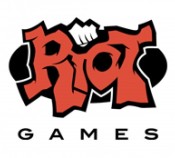There’s real wisdom for parents, coaches and educators – not to mention gamers, athletes and social media users – in this business story about what toxic behavior does to a team. The game in question? League of Legends, a 30 million-player “team-based game” along the lines of Capture the Flag “or, more aptly, ‘destroy the enemy base’,” according to Google’s re:Work’s description. The game company itself, Riot Games, ranks high on Fortune’s 100 Best Places to Work For list, re:Work says.
 When you read this, think game play if you’re a gamer (or coach) or school climate if you’re an educator: Riot figured out that, “if a new player encounters toxic behavior in their very first game, they are 320% less likely to come back again.” That’s not a typo, but even if it were 32%, that’s a lot of people who don’t want to go back to the game, as it would be of students not wanting to go back to school. [Important: This is toxic behavior as defined by the community, not its creators or managers.] “Research has shown that having a toxic teammate in the workplace can bring down the performance and morale of an entire team,” re:Work cited Harvard Business School research as finding. All of Riot’s employees play League of Legends and have an in-game profile, which is a little Big Brother-ish sounding, right? But keep reading.
When you read this, think game play if you’re a gamer (or coach) or school climate if you’re an educator: Riot figured out that, “if a new player encounters toxic behavior in their very first game, they are 320% less likely to come back again.” That’s not a typo, but even if it were 32%, that’s a lot of people who don’t want to go back to the game, as it would be of students not wanting to go back to school. [Important: This is toxic behavior as defined by the community, not its creators or managers.] “Research has shown that having a toxic teammate in the workplace can bring down the performance and morale of an entire team,” re:Work cited Harvard Business School research as finding. All of Riot’s employees play League of Legends and have an in-game profile, which is a little Big Brother-ish sounding, right? But keep reading.
Here’s the part that I think parents and educators will find useful: what the company found out about the toxic in-game behavior and how it handled the people who engaged in it. Four things:
- Mostly snark. This is true in social media too, I suspect (part of the “drama” teens refer to and get tired of): “The most common bad behaviors … were passive aggression (snarky comments) and the use of authoritative language [possible adolescent versions being snark suggestive that “I have more follows than you” or the like] to intimidate or threaten others.” Do you, like I, find it interesting that there’s little difference between school and work spaces, here? This is not just “kid stuff.” Note that it’s not the extreme – cyberbullying (repeated, intentional victimization) – that’s most common.
- Situation fluid. Like moods, the snark and toxicity ebb and flow. When viewers zoom in on the snark from outside the game and the social context, they might be tempted to think this is the way the behaviors or the behavers always are. That’s just not the case. The lesson being that it helps no one – the viewer or the player – to lock the behavior in cement or identify the behaver with a behavior taken out of context. We can’t tell much about a film from a freeze frame of it, right? And yet social media is even more complex, contextual and, well, social than any film!
- Communication ensued. Riot didn’t write anybody off. The company identified “the 30 most toxic employees (all of whom were more junior Rioters, new to the working world)” and talked with each one – armed with game chat logs. “While these logs did factor into the exits of a couple employees who had already had serious problems, the response from almost everyone else was overwhelmingly positive,” re:Work reported. Those conversations were apparently informative not punitive because…
- Snarksters repentant. “Pretty much everyone we spoke with was appalled at their own behavior,” re:Work quoted Riot’s head of HR as saying. They didn’t know how they were coming across (what we can help our kids with, right?) and some said they wanted to be ” not just more considerate gamers but better people.” I suspect that the same would be true of younger people if they were given a chance to see mean online behavior from the perspective of someone else (who was informing not judging). How much do we give them that chance?
What happened after this experiment at the game company is exciting: Riot started working with MIT to study what makes up a great team and how the company could create some. Meanwhile, I followed a link in the re:Work piece to one about Google’s five criteria for successful teams. No. 1 is “psychological safety,” which is the antidote to the most pervasive online risk: social cruelty, from snark to cyberbullying. Creating a psychologically safe environment for play, learning, socializing, etc, a “community of guided practice” – a school, a family, an app, game or virtual world or a company – is the “Infrastructure” part of “the seven properties of safety” I proposed back in 2012. It’s the new frontier of Internet safety, the infrastructure that fosters kindness and civil counterspeech in community members (and communities), online and offline.

[…] Handling toxicity: Insights for parents & teachers from Riot Games – NetFamilyNews.org | N… […]